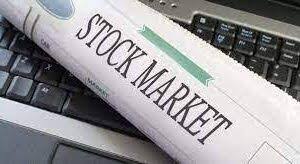A single currency for the ECOWAS sub-region is the ultimate objective of the member states. It is however the most difficult part of the integration process because of the various national currencies, some of which are not under the control of their respective governments, and others are weak, prone to inflation, low gross national production and minimal natural resources to back the value of these currencies.
The eight francophone countries in ECOWAS already have a common currency, the Communite Financiere Africaine, translated as African Financial Community, which is controlled by the French treasury, through which it is attached to the Euro zone and as such convertible.
The other strong currency in ECOWAS is the Nigerian naira, which for now is facing the challenges of instability and inability to meet all foreign currency demands for imported goods.
When ECOWAS was founded in 1975, the naira exchanged for about 70 kobo to $1 and the expectation was that the naira might eventually replace the CFA or both would be used freely within the region and for foreign trade transactions.
The circumstances of the naira had changed in the past 40 years, with the exchange rate gone down to around N350/$1, and the CBN is struggling to keep the naira from going further downhill.
The way forward for ECOWAS to achieve a common currency may depend on upgrading the value of the Nigerian currency by taking measures which will cut down the current high level of importations, especially such goods which can be produced locally. This should begin by refining petroleum products in the country. Nigeria should not be importing petroleum products and food, it doesn’t sound right.
The constraints before the Franc CFA are the limited control over the currency by the Francophone ECOWAS countries. The monetary policies are set by the European Central Bank and executed by BCEAO, the Francophone West African Central Bank, in Dakar. This arrangement seems to suit these countries for now, because it had stabilised their economies and encouraged the French government to build critical public utilities, such as water, electricity, roads and railway systems. But for how long will this appendage continue?
There are other currencies in the sub-region like Ghanaian Cedi; the Gambian Dalasi; and the Guinean Franc.
Guinea Conakry was in the CFA zone until 1958 when it opted out of the CFA arrangement on gaining independence. The country’s first President, Ahmed Sekou Toure, wanted both political and economic freedom and decided to float the Guinean Franc or Sylis against all the odds.
Toure took some survival measures which were crude but effective. He unilaterally pegged the exchange rate of the GF at 2,3/$1 but did not bother about the parallel market or black market rate which was about 200 GF/$1.
He focused more on the welfare of the people, so that they did not miss out being part of the Francophonie family.
I witnessed how Toure did it from 1982-84 on my second posting abroad. Conakry was a hardship post because of the minimal and Spartan utility facilities in the country, which were often in short supply. France had removed virtually every semblance of infrastructure in the country and collapsed the rest to deter other countries, which might be tempted to follow this path of economic independence.
Toure issued ration cards to every family in the country, including international persons and diplomats with which rice, fish, meat, sugar and vegetable oil were supplied via government warehouses at affordable prices. A 50 kg rice was sold for about $8. It was similar to the services rendered by the Nigerian National Supply Company around this same period.
Education at all levels was free, including health services. The President and other cabinet members’ children mingled freely with the children of ordinary people in the same class and school.
The government funded these schemes from the foreign exchange earned from the exportation of bauxite. He did not allow free access to foreign currency at the official rate of 2,3 GF/$1 except for very critical needs such as medical treatment abroad, machinery, and importations by government agencies.
The people were not exposed to exotic tastes which could lead to desires to acquire such materials by force and violent crimes.
About two and half decades after leaving Conakry, I was in Paris, and I went to check, out of curiosity, if there were Guineans among the “sans papier”, the illegal immigrants from Africa who were taking refuge in churches in France to prevent their repatriation. There was no single Guinean among them. Those who went abroad were usually trained professionals, such as engineers, doctors and scientists, who added value to the host societies. Guinea was able to fashion out a homegrown policy by thinking out of the box and it worked.
Ambassador Akinkuolie Rasheed, former Director of Trade and Investment, Ministry of Foreign Affairs [email protected]



